#katsuie shibata
Explore tagged Tumblr posts
Text

Katsuie Shibata - H-Game: Sengoku Hime 4 ~Souhai Hyakkei, Hana Mamoru Chikai~
#Katsuie Shibata#H-Game: Sengoku Hime 4 ~Souhai Hyakkei Hana Mamoru Chikai~#anime character#anime aesthetic#oc aesthetic#video game character
1 note
·
View note
Text
Fate Grand Order material IX [Digital]part 10 FINAL
























#Fate Grand Order material IX [Digital]#fate series#fate#fate official art#fate grand order#fgo#merlin#siegfried#oda nobunaga#mordred#Maxwell's Demon#Akechi Mitsuhide#Shibata Katsuie#Fūma Kotarō
45 notes
·
View notes
Photo
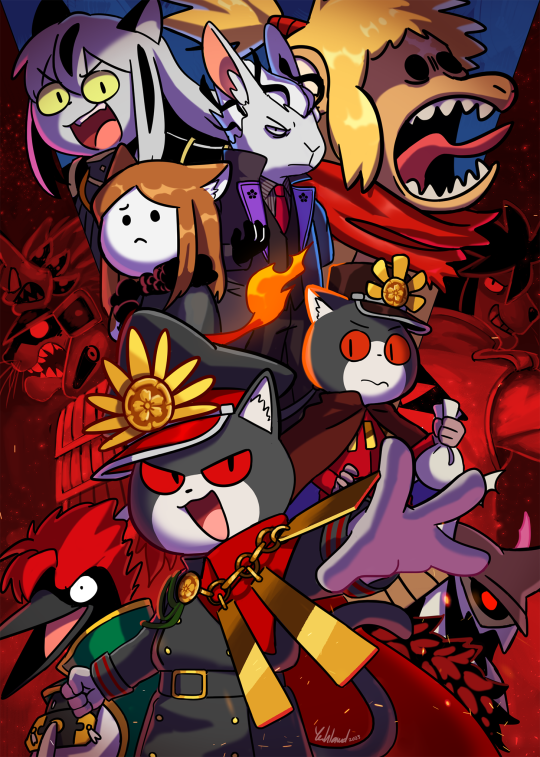
my contribution for Fate/Felidae zine and you can get it for free!!
#fate grand order#FGO#fate/grand order#fate series#artists on tumblr#fateGO#oda nobunaga#gudaguda#oda nobukatsu#mori nagayoshi#shibata katsuie#chacha#toyotomi hideyoshi#mitsuhide akechi#takeda shingen#nagao kagetora#yehlawd art
231 notes
·
View notes
Text
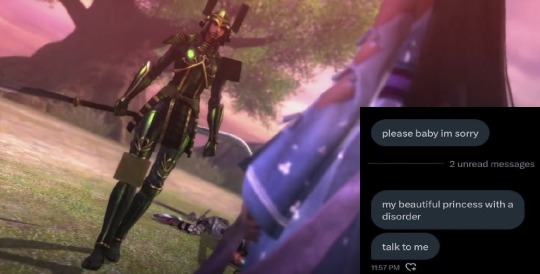
Katsuie...this is NOT how you get girls...
#Sengoku Basara#Shibata Katsuie#Oichi#Azai Nagamasa#Alright...back to Twitter to yell about my OTHER favorite tragic depressed pathetic guy...
11 notes
·
View notes
Text

May 16th - 19 years of existence .... !!!
#selfshipper#self shipping community#selfshipping community#f/o community#romantic f/o#oc x canon#bungo stray dogs lovecraft#fgo tezcatlipoca#under night in-birth carmine#ninja kamui zai#HI-DRIVERS Chu Higuchi#sengoku basara katsuie shibata
5 notes
·
View notes
Text
How Beautiful Are You?
ODA ARMY
Mitsuhide is 90% Beautiful
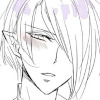
"This seems inaccurate... none surpass Nobunaga-sama."
Katsuie is 41% Beautiful

"Eh? Only 41? Are you sure?"
Nobunaga is 11% Beautiful
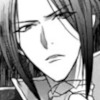
"I do not care what this... shindan... thinks of me. I am the most powerful warlord in Shinga, my beauty is irrelevant."
Nagahide is 41% Beautiful
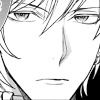
"I'm offended that I rank the same as Katsuie."
5 notes
·
View notes
Photo
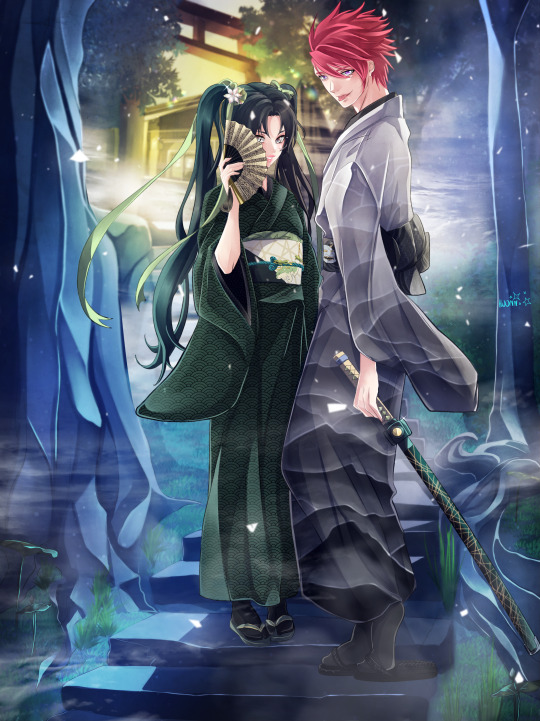
Commission for @yugenronin and @melatoninburst~! ^^ Shibata Katsuie and OC Shanice ——— ✦ commissions ✦ Twitter: @iwonn_arts Redbubble: Iwonn
13 notes
·
View notes
Photo


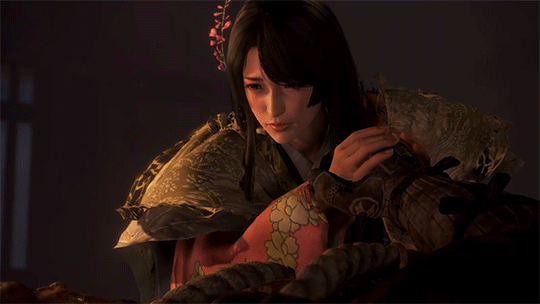
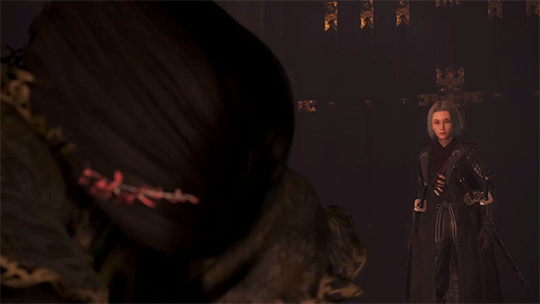


Death scene: Shibata Katsuie & Oichi
5 notes
·
View notes
Text
Once upon a time in Nobunaga: King of Zipangu
Retainer: "Shibata is hurt yet, he can't join for this current battle"

Shibata in alternate universe: "I came for your head!"

i bet he had tight schedule in that time
#nobunaga king of zipangu#shibata katsuie#hissatsu shigotonin gekitotsu!#takita sakae#yamada asaemon#actor joke#hissatsu#taiga drama#hissatsu series#he also les miserables's jean valjean lol
0 notes
Text
Hello there Shibata "Riku" Katsuie fans.

0 notes
Note

"I knew we would do well! We're best buds after all!"
Katsuie is thrilled, so pleased he doesn't even notice Nagahide in the background commenting that it is not one soul they share but one brain cell.

Mitsuhide, however pleased he is to know that his friendship with Shanice is approved of by the spirit of the love meter, is indeed embarrassed. But...
He cannot deny he has learned a great deal from her.

"How dare this meter spirit make such comments. Disgusting."
Their feelings were the same and very far from feelings of love. They tolerated each other and that was the extent of it. He only kept her around because they needed her.
💗 for the boys! Bonus points if Oda is included to spite Shanice.
Love calculator: accepting
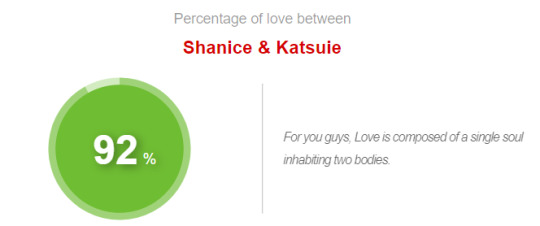

"As expected, our bro-relationship is top tier."


"...He's going to get embarrassed about this, isn't he?" Poor guy.


"...Life was a mistake."
2 notes
·
View notes
Text
Viewer's Choice Poll #32
descriptions of each character below the cut:
1. Tepeu

I don't know a ton about this guy or his abilities since I'm still going through the lostbelt myself, but he looks polite and I'm sure nothing bad will happen to him. aside from his entire world ceasing to exist I mean.
2. Tanaka Shinbei

Tanaka's kind of a bigger, buffer Izou. he specializes in killing enemies in one strike, and god you could grate cheese on those things.
3. Beryl Gut

This one's for all the girlies out there with low standards! going into what beryl gut can do is a pretty major spoiler for lostbelt 5, but he's deeply unhinged and morgan's master, so if you're lagging behind on the story maybe this'll persuade you to catch up.
4. Shibata Katsuie

Chacha's stepfather, and just an all-around implacable badass. like, the only reason ritsuka stood a chance against him was because he decided to stop fighting levels of tough.
5. Delightful Rider

otherwise known as Georges Melies, Delightful Rider is the pioneer of film effects, and as such she can edit powers of other servants together to make her own unique noble phantasms. she also specializes in altering the battlefield with vfx.
6. Aphrodite

the greek god of love and all things valuable, Aphrodite is able to warp humanity's sense of values to whatever she desires within a certain radius of her being. she also made Galatea, so I'll have to figure out how to make this a twofer...
7. Theseus

so, theseus! he's damn good at figuring his way through a labyrinth, and he's happy to use literally any weapon at his disposal. he's explicitly on the same tier of power as heracles, and even comes packing a diet version of herc's noble phantasm, letting him counter six attacks and steal their weapons for his own use. stealing people's shit is kind of a running theme this time around, huh?
9 notes
·
View notes
Text
due to tumblr only having two options for poll length this will go until after the new event drops so uh, well you know
39 notes
·
View notes
Note
is the kanji on the sanji picture possibly 柴田 勝家? this guy's name? https://en.m.wikipedia.org/wiki/Shibata_Katsuie
Thank you!
That tracks. Apparently this figurine is from a set of historical figures, and Sanji is Shibata Katsui in this one. I also learned there's a statue of him in.
Thanks for your help everyone xx
#answers#bout to read about some japanese history#after I finish my submission lol#I've been looking at so many references
2 notes
·
View notes
Text
Koei Warriors Retrospective Part 9: Samurai Warriors 2



Samurai Warriors 2 (戦国無双2) Platforms: PlayStation 2, Xbox 360, PC Release dates: Japan: 24 February 2006 (PS2), 17 August 2006 (Xbox 360), 11 July 2008 (PC) USA: 19 September 2006 (PS2), 19 September 2006 (Xbox 360), 27 June 2008 (PC) Europe: 22 September 2006 (PS2), 22 September 2006 (Xbox 360), 27 June 2008 (PC)
For years, what I knew about this game and the Samurai Warriors series in general came from the Warriors Orochi games. I didn't know a lot about the figures or battles of Sengoku era Japan unless I researched it on Wikipedia or eventually played the games.
While writing my personal project in 2014, the order of adapted battles in the story for that year went as follows: Mikatagahara, Odawara, Nagashino, Shizugatake, Okehazama, Komaki-Nagakute, Sekigahara, Ōsaka and Honnōji. If I had a more proper understanding of the game and the era, I probably would have done those things in order, but then again I'm just making up my story and not entirely adapting history.
Like how Dynasty Warriors 5 was made more historical than previous games, Samurai Warriors 2 was the equivalent for its series. This game goes past Nobunaga's era to focus on Hideyoshi's unification of the land and the Battle of Sekigahara, introducing characters associated with said battles. The visuals are made golden to contrast the darker colours of the previous game.
Let's get into the guts of it right after the break.
Samurai Warriors 2
Starting off with the characters now, and one thing to note is that the character lineups are not consistent between games as characters have been cut and reintroduced as the series goes on. As such, Goemon Ishikawa, Kunoichi and Yoshimoto Imagawa have been cut from this game, but their images can still be seen in Sugoroku and the Battle of Okehazama is still mentioned at the start of the Story Mode for related officers.
Okuni and Ranmaru Mori are still in this game, but they have no Story Modes. Okuni is unlocked by winning a game of Sugoroku while Ranmaru is unlocked by playing the first two Mitsuhide and Ranmaru's Requests in Survival Mode. Their fourth (and later fifth) weapons are also unlocked in Survival Mode as well.
Here are the new characters debuting in this game:
Ieyasu Tokugawa (PC'd)
Mitsunari Ishida
Nagamasa Azai (PC'd)
Sakon Shima
Yoshihiro Shimazu
Ginchiyo Tachibana
Kanetsugu Naoe
Nene
Kotarō Fūma
Musashi Miyamoto
Kojirō Sasaki (NPC)
Katsuie Shibata (NPC)
As listed above, Ieyasu Tokugawa and Nagamasa Azai are now made into playable characters, with Nagamasa's seiyuu changing from Takayuki Sasada in 1 to Hiroshi Kamiya from this game onwards. Nene essentially replaces Kunoichi's role as a female shinobi in this game. Yoshihiro and Ginchiyo's introduction also marks the introduction of the clans of Kyūshū, most notably the Shimazu and the Tachibana (through the Ōtomo clan). Katsuie Shibata and Kojirō Sasaki are the new NPCs appearing in this game; they can be unlocked as bodyguards for 6,400 gold in the shop after clearing a mission in Survival Mode. The narrator in the Japanese dub has been changed to Daisuke Gōri, who also voices Shingen Takeda.
Hideyoshi Hashiba is now known as Hideyoshi Toyotomi from this game onwards, with his seiyuu changing from Munehiro Tokita to Hideo Ishikawa. Historically, the name Toyotomi was granted to Hideyoshi and his clan by the Emperor in 1586. In this game, Hideyoshi's surname is never mentioned and he is only known by his former name when he's an ally or enemy before the Conquest of Kyūshū (Shikoku in XL); when you play as him, he will always be known by his new name no matter what battle you play. Later games would make the distinction clearer and more accurate, with Hideyoshi being known under Hashiba or Toyotomi depending on what year the battle took place (except for the stages where he wasn't originally featured in 3 in which case is is always known under Toyotomi).
Story Mode is made up of five (individualised) stages per character (no splitting paths or special conditions) with an extra Gaiden/Dream stage after completing the first five. Ieyasu and Mitsunari, being the leading figures at the Battle of Sekigahara, get a sixth story stage. For Kenshin, Oichi, Magoichi, Mitsunari and Yoshihiro, their Dream stages are unlocked after also fully clearing the Story Modes for Shingen, Nō, Masamune, Kanetsugu and Yukimura. The stages Village Rescue (set in Saika) and Pirate Hunt (set at Ōsaka Bay) are used as filler stages for 10 characters (including Kojirō in XL).
Free Mode is streamlined from how it was in the first game; each (or rather, most) battles have only two sides to play as and they utilise one character's version of each battle from Story Mode (with some exceptions depending on who you play as). Reused stages and Dream stages are excluded in this mode. One thing you will notice is that Odawara Castle has two versions for the west and east sides, though I wish they didn't name both versions as Siege of Odawara Castle (小田原城攻略戦) even though it is technically correct. All battles are one part only (thank god), with castles being incorporated seamlessly onto the maps.
Although battle objectives/missions still exist, battles are not entirely defined by them, meaning that objectives only trigger when you approach certain areas or officers. Also, for the first time, there are no subofficers listed in the officer/Unit Info list, meaning that player characters are listed individually in the list. If you're not a listed officer in the battle, you are shown at the bottom of the list, which is still better than being listed under the commander as "Player 1" or "Player 2". Third-party armies are now displayed in a separate list to the enemy army so more than 12 enemy units can be placed on the map.
Speaking of missions and Odawara, the west map features a mission where you have to defend a siege ramp. The siege ramp in that stage has got to be the weakest siege ramp ever because every enemy that comes near it will try to attack it and it gets destroyed if you leave it alone for more than 30 seconds. The Battle of Chencang in DW5 was less intense in comparison.
Survival Mode continues from the last game. Instead of offering two (or three) modes to choose from, you're given four missions to choose, some of them free and some of them paid. Each mission has five floors and you have the option to save after each one. In the free missions, you have Search for a Hero (強き者求む) which is just randomised missions, or the request storylines from Ranmaru, Mitsuhide and Keiji which cover you for the first 50 floors.
Once you get to that point, you're able to skip up to floor 51 on a new playthrough by paying a fee. The game goes up to floor 100 but you can continue on if you want to. Floor 71 has missions to unlock two rare horses, Persian Mare and Moon Child (Hoshōtsukige/放生月毛). Floor 76 has missions to unlock Katsuie and Kojirō. Also on floor 71 along with 86 and 96 are missions to unlock three Level 4 skills, but you need to have your character's respective Level 3 skills before attempting to unlock them otherwise you're just wasting your time. The good thing is that once you've done this for one character, you don't have to do this again for everyone else. When you get those Level 3 skills, you can just buy the Level 4 skills at the shop.
Sugoroku is a unique mode in that it's a Monopoly-esque game unlike the traditional Japanese board games. You play with four opponents (human or CPU) and the overall objective is to be the first player to achieve a particular gold amount set at the beginning (from 5,000 to 50,000 gold). You can choose between a small map covering only Honshū or a large map covering all of Japan.
As you go around the board, your focus is to obtain three flags scattered randomly on the map and return to home base to move up a rank. While you do this, you buy unoccupied territories to claim rent from the other players and take occupied territories by challenging their owners in one of six different challenges (provided without a separate Challenge Mode).
If you land on a shrine, you'll get to roll two dice to determine what happens to you; you might earn gold, increase land prices (fucking Asian real estate developers lol), take another turn with one or two dice, lose gold, teleport to another square or make things happen to everyone. If you roll a double here, you're taken to achieve a goal in a challenge; completing it will give you 100 gold, but failing it will cause that reward to be rolled over for the next double roll challenge. The weird thing about the shrine dice rolls is that it's hard to determine which die will determine which category or challenge until they land and rearrange themselves (ie, if die 1 lands on the right and it decides the left number, vice versa with die 2). If they made it so you roll one die at a time or made both dice different colours, then you could have a better idea of what to expect.
This game does take some time to play, even for a 5,000 gold target. The bad thing about this is that you can't save and move onto something different, even in a single player game, but that's what emulators are thankfully good for. At the end of the game, you get about 12.5% of your final gold total to use in the rest of the game, which is just paltry for the effort required to play it. I'll come back to gold earnings later.
In battle, Special Skills are a new mechanic introduced in this game, triggered by pressing R1, then pressing either Square or Triangle. This functionality replaces ranged attacks from the first game. With the introduction of Special Skills, a very small number of characters are able to summon horses, those characters being Yukimura and Keiji (and later Toshiie in XL). If you ask me, it is a bit unfair that only three characters can summon their horses, but rest assured that this does get fixed in future titles.
Two new moveset types have also been introduced for characters in addition to the Charge Attack moveset from the last game, namely the Normal Attack moveset and Special Skill movesets. Some characters from the last game retain their Charge Attack moveset while others have their attacks reassigned for the Normal Attack moveset or nerfed for the Special Skill moveset. For the Normal Attack moveset, Normal Attacks go up to N12 while Charge Attacks go up to C8 and are single-tiered. For the Special Skill moveset, it remains similar to the Charge Attack moveset except the Charge Attacks are only double-tiered, but both Special Skills are triple-tiered.
The Musou bar is upgradable to three levels, with the maximum reached by the time you reach the maximum level of 50. You can unleash a Musou Attack as long as the first section of the bar is filled, meaning that you can only manually charge it up to that point (but let's face it, who does that anyway). The first and second level Musous only affect the colour of the finishing shockwave (from blue to green) while the third level Musou adds a secondary effect depending on the character (while also changing the finishing shockwave to yellow). The same applies to the True Musou Attack as well.
Holding down the Circle button on horseback no longer swings your weapon like it did in the last game and DW, but you can still perform Normal and Charge Attacks while charging around. This game would begin a trend of horseback Musous just being bland rampages.
The right analog stick can now be used to rotate the camera, something that would be included in future Warriors games from this point forward.
Between battles, you will be able to access the shop to upgrade your weapons and skills. The shop is run by Saya, the master's daughter from the first game's New Officer Mode (who also slaps Magoichi in the first movie of his Story Mode). She will continue to make appearances as the shopkeeper in future games.
Four levels of weapons continue to be offered from the previous game. Weapons can have up to eight slots for attributes (going up to level 20 in a similar manner to DW5) and they can also have an element that is activated when you have one level filled in the Musou Gauge. The Dark element from the last game has been replaced with the Wind and Demon/Death elements. You can upgrade your weapon with a random ability for the price of 100n + 400, where n is the number of times you've upgraded your weapon. There is a chance that you may get a duplicate attribute; the stats do stack but you can have a maximum of 3 copies for that particular attribute.
Skills are a new mechanic that replaces the item system from the first game. Characters can learn skills by buying them in the shop, levelling up or stealing (or rather, learning in the English version) from enemy officers. Excluding rare skills, you'd be looking at spending 81,600 gold to buy all non-rare skills up to level 3, then another 30,000 gold to get the three level 4 skills. Rare skills can be learnt on Hard difficulty and above by defeating certain playable officers. When your character reaches a certain level (in a multiple of 10), they will learn a quasi-unique Self Skill. Skills can be turned on and off before starting a battle.
Bodyguards are also reduced to being a single officer instead of a group of four soldiers (also similar to DW5). They can be levelled up to a maximum level of 20. There are 10 classes of bodyguards and you can keep up to 8 of them (out of a total of 54), but if you were to hire everyone, you'd be looking at spending 153,900 gold. Once again, bodyguards only have voice lines when they are killed.
My main gripe about this game are the costs to purchase things in the shop when compared to the amount of money earned each battle. Amongst the collectible items in the game, you can collect up to 100 gold at a time, with level 4 Greed giving you a multiplier of 1.8 for a total of 180 gold. Given how much things in the shop cost, you can only really afford to do so much before you run out of money. Compound that with the fact that there are 26 playable characters in this game (32 with Xtreme Legends) and it does take a while for you to get your character decently powered-up. Of course, if you've spent a lot of time on this game (particularly 18 years ago when this game was first released) then this will be nothing to you, but this is coming from me who's only been playing it for two years in the hope of eventually reviewing it.
New Officer Mode has been removed in this game, but the closest thing to playing the CAW sword, spear and naginata movesets, along with the movesets of various troop types, is by using one of Nene's Special Skills, which can make her disguise herself as a nearby soldier or officer.
No new voice lines have been recorded for Survival Mode (like with the last game), so the only voices you'll be hearing are those that were already in the rest of the game. Some lines have been recorded for player characters in Sugoroku, but I'm not sure if they were also heard in other areas of the game. This can't be traced back to lazy localisation (we haven't even got to that point yet) because I've been playing this in Japanese and I've experienced the same thing, though I suppose if the lines were voiced in the Japanese version and not the English then this issue wouldn't have stood out that much and I probably wouldn't have noticed it when I did.
Now let's talk about the English localisation of this game and hmm... are those the English voice actors being credited in the credits? Breaking with what should be tradition for Warriors games, the localisation for this game was done in Canada, the actors provided by Total Casting and the dubbing produced by Agile Sound, both being subsidiaries of Montreal-based Agile Entertainment. No justification is given as to why Koei decided to use another company instead of Voicegroup for localisation, but a lot of fans I've seen do seem to like the English dub for this game. As someone who came to this series after playing Warriors Orochi however, I honestly can't get used to it as it sounds kind of bland in some places, but hey, I guess that's my toxic nostalgia talking. Looking forward though, I can see how some character lines from this game inspired those in Warriors Orochi.
For the first time, the PC port of SW2 does not have any enhancements like DW4 Hyper or DW5 Special. Once again, given the timing of that release, the lack of Xtreme Legends features in PC ports continues to confound and infuriate.
Samurai Warriors 2 Xtreme Legends
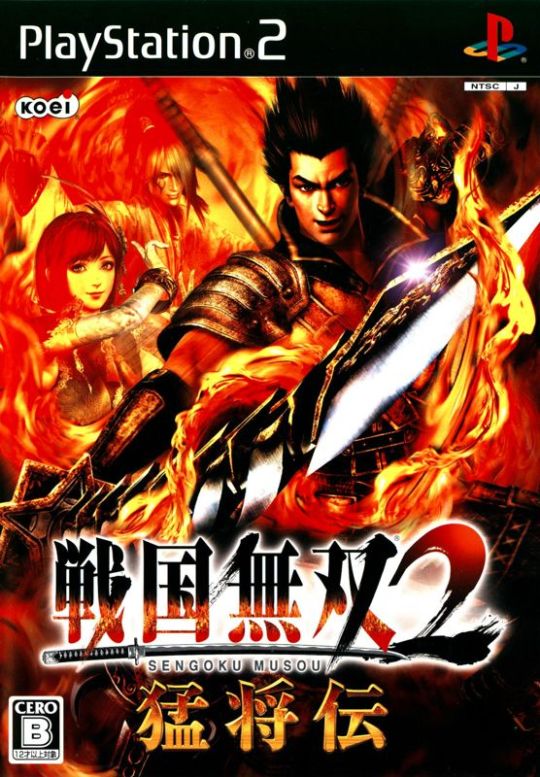
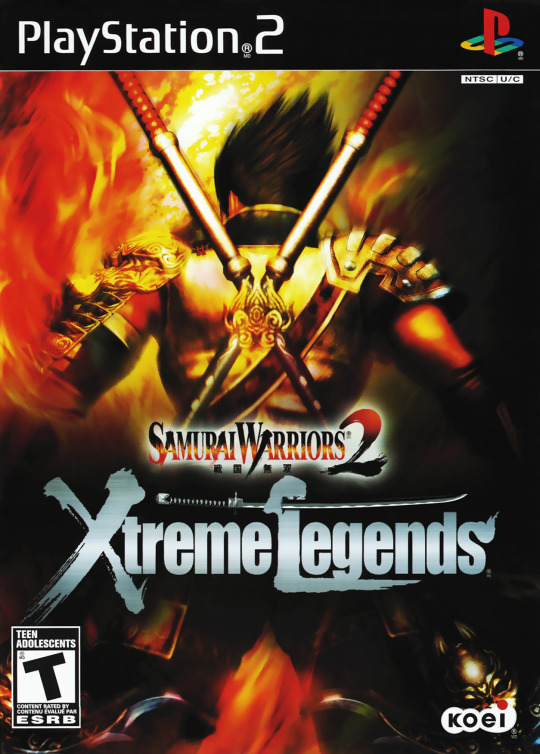
Samurai Warriors 2 Xtreme Legends (戦国無双2 猛将伝) Platforms: PlayStation 2, Xbox 360 Release dates: Japan: 23 August 2007 (PS2), 14 April 2008 (Xbox 360) USA: 18 March 2008 (PS2), 16 April 2008 (Xbox 360) Europe: 28 March 2008 (PS2), 16 April 2008 (Xbox 360)
Uniquely, the Xtreme Legends expansion for SW2 was released after its Empires spinoff, explaining the nearly 18-month gap between the vanilla game and the expansion as opposed to the 6 month gap in the case of DW4 and 5. At least DW3XL came out nearly a year after its vanilla release.
This game also marks the first time that (the full content of) an Xtreme Legends expansion is made available on a non-Sony console. With the Xbox Live Marketplace being the first digital game distribution shopfront of its kind, SW2XL was made available on the Xbox 360 as DLC in April 2008, it being compatible with both the physical and digital versions of the vanilla game. Such a shame it's no longer available for purchase now that the marketplace closed down at the end of July 2024.
In Japan, the DLC release was a month after a physical version was sold on 19 March 2008 in the form of a "with Xtreme Legends" Complete Edition. This also begins a confusing tradition of Complete Edition games being released alongside Xtreme Legends expansions exclusively in Japan. Such a thing wouldn't happen in the West until DW8.
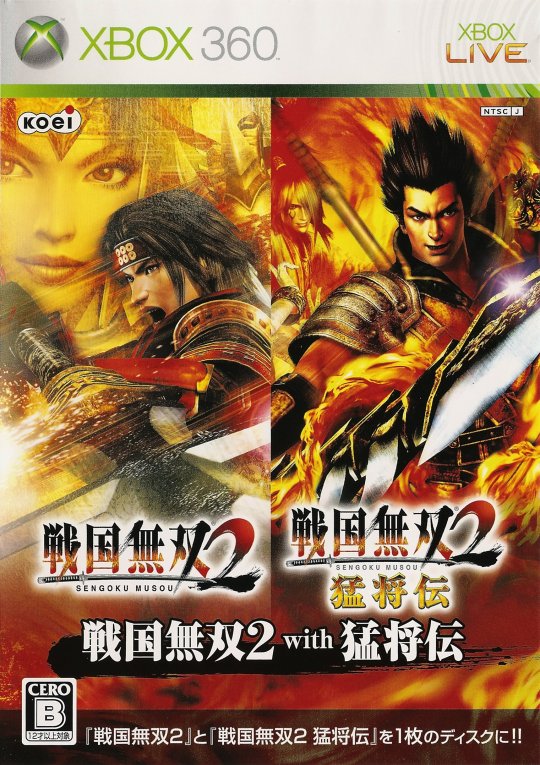
Some PS2 players have reported issues with this game, particularly those with older "fat" models and Slim models, due to the game being on a dual layer DVD-9 disc and the laser reader sometimes having issues with it.
5 new playable characters make their debut in this game:
Toshiie Maeda
Motochika Chōsokabe
Gracia
Kojirō Sasaki
Katsuie Shibata
Kojirō and Katsuie were previously made playable in Empires, but this game gives them new unique weapons. Motochika's introduction introduces the Chōsokabe clan of the Shikoku region as well. Gracia, the daughter of Mitsuhide Akechi also known as Tama(ko), is never named by any of the characters in any game she appears in. Granted, Gracia is her Catholic name and she wasn't baptised until 1587 when Hideyoshi was conquering Kyūshū, but it's kind of weird to have characters refer to her as "Mitsuhide's daughter" or something vague.
Yoshimoto Imagawa makes a return in the expansion after being cut from the vanilla game. As such, Okehazama returns as a stage in this game and a new stage, Shikoku, is introduced.
Toshiie Maeda is an example of a generic officer being upgraded to a playable character in the expansion. However, the extent of how he is upgraded when seems to vary. See, the assumption is that when a generic officer is made playable in an expansion, that officer's appearance in other stages is upgraded to their playable appearance (which does happen in later games). In the case of Toshiie in this game, some of his appearances are straight-up upgrades, but in some stages he is replaced by another generic Oda officer like Nagahide Niwa, Nagayoshi Mori or Nagachika Kanamori. This happens regardless of whether Toshiie was an allied or enemy officer in the vanilla game.
So yeah, all the Xtreme Legends trimmings are there, from Story Modes for the new characters, Novice and Expert difficulties to fifth weapons for all characters, including Ranmaru and Okuni which once again, are only unlockable in Survival Mode. Levels are increased to 70 for player characters and 30 for bodyguards.
In regards to Musou Mode, the final cutscene movie of Toshiie's Musou Mode has been changed in Western releases for the Xbox 360 and the European release for the PS2, but it is intact in the US release for the PS2 and all Japanese releases. The original cutscene shows Toshiie, in grief over Katsuie's death, punching out Hideyoshi while proclaiming his new duty to watch over him and share the burden he bears. In the changed versions, the cutscene was changed to be a shortened replay of Katsuie's final cutscene where he farewells Toshiie before resigning himself to his fate inside a burning Kitanoshō Castle. I presume this decision was made for censorship reasons due to violence, which is kind of weird considering the nature of this game and the fact that Toshiie gets punched himself in earlier cutscene movies.
New charge attacks are introduced for all characters, namely the C5 for the Charge Attack and Special Skill movesets and the C9 for Normal Attack movesets. They are all single tier and some of those attacks may also incorporate elements of their Special Skills.
Two new sections have been added to the shop. When your character reaches level 19, Special Skills will be available for purchase, but note that buying one only buys it for that character and not everyone else. To buy all 15 Special Skills you'd be looking at spending 417,000 gold per character. If you don't want to spend that much, then take note that some characters' Self Skills are the same as Special Skills such as Finesse/Spring, Resist/Balance, Omniscience/Awareness, Pressure/Repel and Resist/Confidence. Only one Special or Self Skill can be equipped on a character.
The other new section in the shop is Orb Synthesis. Using orbs, you can directly add attributes of +20 to your weapon or even change your weapon's element, even for fourth and fifth weapons and weapons with no attribute slots. Orbs are mostly obtained through Mercenary Mode, but in rare cases they can also be found in Story and Free Modes (though I suppose the chances are higher on harder difficulties). The cost to do this is x*y where 0 < x < 9 for the number of slots and y < 5 for the weapon level, which potentially makes it more expensive than when you upgrade a weapon normally. Weapons without attribute slots (usually initial weapons) are treated as if they had one and fifth weapons are charged the same as fourth weapons. The maximum limit of three copies per attribute still applies.
Mercenary Mode is the new unique mode added to this game. It serves as a great grinding mode for experience, gold and orbs, plus this is arguably easier than Xtreme Mode in DW4XL and 5XL, probably because it carries over your gold and character stats from the rest of the game.
After selecting your character, you can choose from three battles that all have different objectives and handicaps, such as starting with low health, multiplied damage or nullified guarding. You earn gems after each battle and as rewards for completing special missions.
Guards can also be hired between battles for 10 gems each. You can deploy two guards at a time with an additional three in reserve. After playing or deploying a character for a certain amount of turns (certain rewards can reduce this), they are able to be levelled up, granting them an additional skill. Skills include automatically opening gates when approaching them, using some of your Musou gauge to create a barrier, earning an extra gem every 50 KOs and nullifying enemy quagmires (giggity)/birdlimes/tar traps, poison attacks and fire attacks. Skills apply from both the player character and the guards deployed, so it's a good idea to ensure you have as many bases covered as you can.
As you play battles with clans, they will give you rewards the more you play with them. When you play 7 battles under the same clan, you will be offered to join them as a retainer for 50 gems. Once you do, no other clan will give you rewards while the clan you joined will continue giving you rewards the more battles you play under them.
Special events will appear in the menu throughout your playthrough. Some of these may be rewards from various people, requests for assistance that unlock special missions, or offerings that unlock Precious Swords. I'm not sure if those missions expire, but if you're aiming for the second ending, then it's a good idea to complete them as soon as you have the gems for them.
There are two ways to clear Mercenary Mode. The first way is to join a clan and fight another 7 battles under them for a total of 14, at which point you can fight a battle to unite the land and clear the mode. The second way is to collect all ten Precious Swords and unlock a battle for supremacy, where you will have to fight three officers in hyper mode to clear the battle. This battle doesn't happen until you reach battle 100 because of how the Precious Swords are collected and there's nothing special after that. As such, there is no reason to replay with the second way other than to get the associated achievements/trophies because the first way is faster.
Like with Survival Mode in the vanilla game, no new voice lines have been recorded for Mercenary Mode. Is it so much to ask for consistency?
Samurai Warriors 2 Xtreme Legends HD Edition (Sengoku Musou 2 with Moushouden HD Ver.)
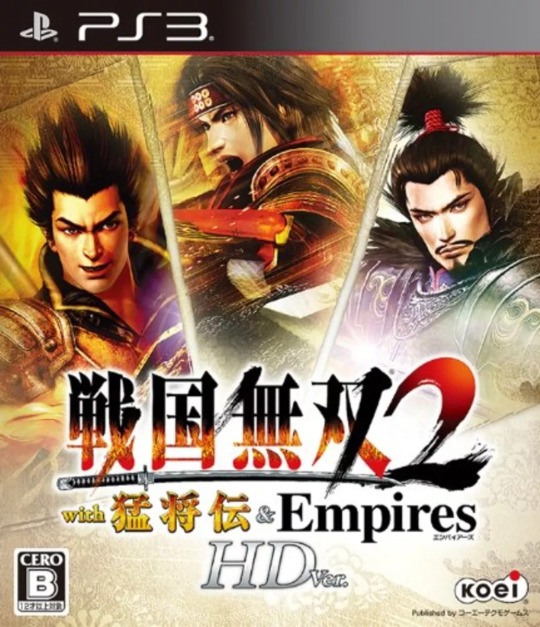
Samurai Warriors 2 Xtreme Legends HD Edition (戦国無双2 with 猛将伝 HD Ver.) Platforms: PlayStation 3, PlayStation Vita Release dates: Japan: 24 October 2013
This is the version of the game I've been playing for the purposes of this review. Why did I pick this version for it? Well, I was able to get most of the Samurai Warriors games on the PS3 anyway, so why not get this version of SW2 and make RPCS3 my Samurai Warriors hub? Sure, I could play the Xbox 360 version for a widescreen experience that's closer to the original PS2 release, but why the hell should I go to the effort of setting up Xenia for it when I could just get this?
In 2013, Koei (Tecmo) rereleased SW2XL alongside Empires in an HD Edition for the PS3 and PS Vita. Both games are sold separately on the PlayStation Store, but on the PS3, they can be bundled into a single digital package or a physical disc, meaning that when you launch the game, you are greeted with a launcher that allows you to select between the two games. This also allows you to switch between the games by going back out of the main menu and into the launcher without having to change discs or exit to the Home Screen/XMB. Save data and trophies remain separate between the two games.
The main enhancement of the HD version is that this version takes advantage of the PS3's capabilities to deliver improved graphics and more enemies on screen. Apparently this version also makes use of the AI engine from the next game, Samurai Warriors 3, and while I haven't seen any Japanese sources to confirm this, I can say that you do get a bit of that feeling, particularly in Empires. All modes and characters are available from the start.
With this game also being available on the Vita, ad-hoc multiplayer gameplay is available (Sugoroku only allows you to have two players playing wirelessly against two CPU players). Cross-save functionality is also available between the PS3 and Vita through the PlayStation Network. This would also become a thing for later games, although in general, I wish Sony made it so that save files can easily be copied between different consoles, like the PS3 and Vita via USB, without necessarily having to be logged into the PSN. However, this would essentially require companies like Sony to believe in the philosophy of free and open source software (FOSS).
If there's one thing I could say about this port, it would be, WHY WASN'T THIS PORT RELEASED TO THE WEST? The localisation already exists, so it would be easy to publish a localised port of a remastered game. Considering what happened with the Western release of Samurai Warriors 3, this game could have been an easy cash grab to make up for it while also being a nostalgia trip for people who played the game on the PS2 or Xbox 360. Koei (Tecmo) aren't the only main factor in this as Sony also plays a factor in the decision to publish games and ports. This is something I'll come back to when we cover Warriors Orochi Z.
Rant: Why I play in Japanese/MobileJOY
Before I started this retrospective, I stated that I would be playing the Japanese or Asian versions of the games over the English versions where possible. There are multiple reasons for this.
Firstly, there are some games and ports that were only available in Japan/Asia, such as SW2XLHD, SW3Z and WOZ. Secondly, and this ties into the first reason, I don't want to waste time setting up and going between other emulators (like Dolphin for SW3 on the Wii or Cemu for WO3 Hyper on the Wii U) to play the games in English. As it is, I'm already playing Xtreme Legends expansions on one console per game to save time and effort.
Thirdly, and this reason is more for the later games, I play Japanese/Asian versions because I'm disappointed with Koei Tecmo's treatment of localisations, not just with the lack of English dubbing, but their translation decisions and errors. "But Azuma, translation errors existed in earlier games as well!" Yes, I know and I have noticed them despite their rarity, but I'm bringing this to the forefront because of Koei Tecmo's complacency to these incomplete localisations and apathy to their Western fanbase in regards to this. I'll talk more about this when we get to Warriors Orochi 3.
The main exception to this rule mostly involve games that I already have on portable consoles, like the first few Warriors PSP games. Playing older games in Japanese is mostly for consistency with later games. In the case of the PC games, it's a mixed bag. I already had DW8XL and DW8E in English and I recently downloaded the Chinese versions for them, DW6 and WOZ are in Chinese and the other games have language options which I might utilise, but for the most part I play in Japanese or Chinese.
Now in regards to playing with the Japanese version, you might notice a section in Camp or Options called MobileJOY (like how the "import" function is also known as MIXJOY). Basically what it involves is that you go onto Koei's Musou Mobile website (with your phone) and enter the code on the screen, then it will give you a password that you put onto the screen to unlock the bonuses, which typically involve in-game items. Some games also have additional tie-ins to GREE's 100-man-nin collaboration series, such as with Samurai Warriors 3 Empires where you can unlock characters and rare items in its 100-man-nin counterpart, and in turn, you can unlock special buildings from that game in this one.
The Musou Mobile service, and with it MobileJOY, was discontinued in March 2020. Presuming that the password is generated by the game every time it is booted or you go into the MobileJOY page, that means that the game would also have the password to unlock the bonuses, so technically all that is needed would be the formula to cracking the code. But it doesn't seem to unlock anything special so maybe that's why people don't seem to want to bother with it.
In spite of Koei's decision to use a Canadian company to localise this game (and one from Quebec no less), Samurai Warriors 2 was the certified hood classic that defined the childhoods of its fans just as Dynasty Warriors 5 defined those of others including myself. It apparently had such an impact that it got Koei to get off their asses and release its Xtreme Legends expansion on the Xbox 360 before later remastering an already HD-capable release to the PS3 and PS Vita seven years after its original release. If SW1 is comparable to DW3 and DW4, then SW2 is comparable to DW5, something that would be cemented in a later crossover spinoff series.
Empires is up next for review followed by Katana, those being the spinoffs for SW2.
#samurai warriors#samurai warriors 2#samurai warriors 2 xtreme legends#koei tecmo#koei warriors#koei warriors retrospective
5 notes
·
View notes
